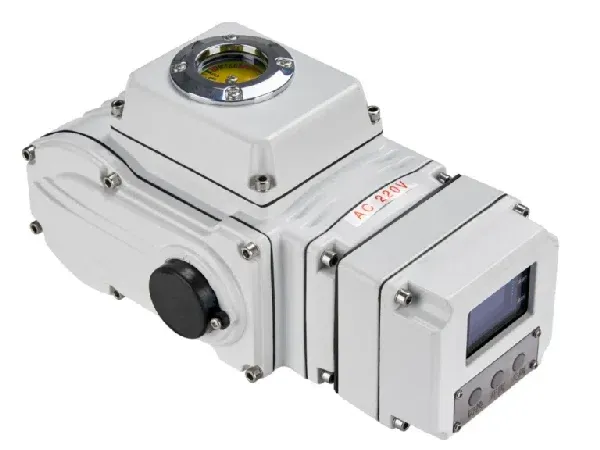Electric actuators are essential mechanical devices designed to convert electrical energy into kinetic energy, producing either linear or rotary motion. These devices play a critical role in automating dampers or valves, enhancing process efficiency, and enabling complex operations. The design of electric actuators varies significantly depending on their intended application, with differences in size, dimension, and functionality tailored to specific tasks.
In recent years, the demand for electric actuators has surged due to the growing trend toward decentralization in automation technology. Modern process controllers can now be integrated with advanced electric actuators, making it easier to comply with updated automation standards. Additionally, the incorporation of failsafe mechanisms ensures that users retain control over processes even during power outages, significantly improving safety and reliability.
Despite their advanced features, electric actuators are not immune to failures. Understanding common issues and implementing proper maintenance practices are crucial to ensuring their longevity and optimal performance. This article explores the most frequent failures encountered in electric actuators and provides practical maintenance strategies to address them.

One of the most common issues with electric actuators is motor failure. Prolonged use or operating under overload conditions can cause the motor to overheat. This overheating leads to increased rotor clearance and excessive vibration, ultimately reducing the motor's output power and causing it to fail.
Handling Method: To address motor malfunctions, begin by inspecting the power circuit and the motor's connection points. If the motor is damaged beyond repair, it should be replaced with a new one to restore functionality.
Power failures can occur due to issues such as power line disruptions, poor electrical contact, or the triggering of protection mechanisms. These problems can interrupt the actuator's operation and lead to downtime.
Handling Method: Troubleshoot power failures by checking for short circuits or open circuits in the power lines. Clean the contact points to ensure proper electrical connectivity and reset any tripped power protection devices.
The transmission components of an electric actuator, including hoses, connecting rods, and fittings, are prone to wear and tear. Damage or loosening of these parts can result in operational failures.
Handling Method: Disassemble the actuator to inspect the transmission components. Repair or replace any damaged or loose parts to restore smooth operation.
Mechanical failures can stem from internal component damage or external vibration issues. These problems often require a comprehensive diagnosis to identify the root cause.
Handling Method: Conduct a thorough analysis of the entire system to pinpoint the issue. Use appropriate tools and techniques to repair or replace damaged components and address vibration-related problems.
If the power indicator light fails to illuminate or the signal is non-functional, it could indicate a blown fuse or a problem with the servo board's power supply.
Handling Method: Inspect the fuse and the power indicator light. Replace the fuse or the indicator light if necessary to resolve the issue.
Improper functioning of the actuator after powering on may be due to faulty resistors or capacitors. These components are critical for the actuator's electrical performance.
Handling Method: Test the resistors and capacitors using appropriate diagnostic tools. Replace any damaged components to ensure proper operation.
Regular maintenance is essential to prevent failures and extend the lifespan of electric actuators. Below are some key maintenance practices to keep these devices in optimal condition:
Conduct regular inspections of the actuator's components, including the motor, transmission parts, and electrical connections. Look for signs of wear, corrosion, or damage that could lead to failures.
Proper lubrication of moving parts is crucial to reduce friction and prevent wear. Use the recommended lubricants and follow the manufacturer's guidelines for application intervals.
Keep the actuator and its surrounding environment clean to prevent dust and debris from interfering with its operation. Pay special attention to electrical contacts and connectors.
Monitor the operating temperature of the actuator to prevent overheating. Ensure that the device is not subjected to conditions beyond its specified temperature range.
Periodically test the electrical components, including resistors, capacitors, and fuses, to ensure they are functioning correctly. Replace any components that show signs of deterioration.
Regularly calibrate the actuator to ensure accurate positioning and control. This is particularly important for applications requiring high precision.
If the actuator is equipped with programmable controllers, ensure that the software is up to date. Software updates often include improvements and bug fixes that enhance performance.
Provide training for operators and maintenance personnel to ensure they are familiar with the actuator's operation and maintenance requirements. Well-trained staff can identify and address issues more effectively.
Maintain detailed records of maintenance activities, including inspections, repairs, and replacements. This documentation can help identify recurring issues and inform future maintenance strategies.
Develop a contingency plan for handling actuator failures. This plan should include steps for diagnosing issues, sourcing replacement parts, and minimizing downtime.
Electric actuators are indispensable components in modern automation systems, offering enhanced efficiency, precision, and safety. However, like any mechanical device, they are susceptible to failures that can disrupt operations. By understanding the common failures and implementing a robust maintenance regimen, users can ensure the reliable performance and longevity of their electric actuators. Regular inspections, proper lubrication, electrical testing, and operator training are just a few of the practices that can help prevent issues and keep these devices running smoothly. With the right approach to maintenance, electric actuators can continue to play a vital role in advancing automation technology.
